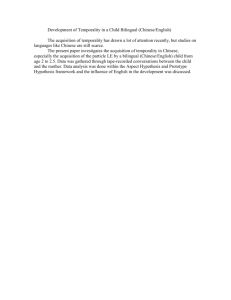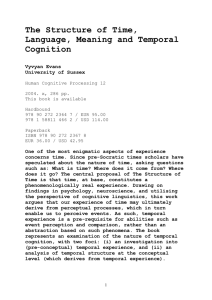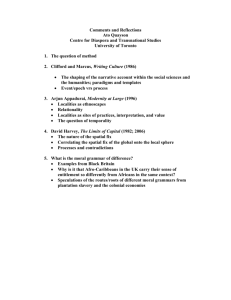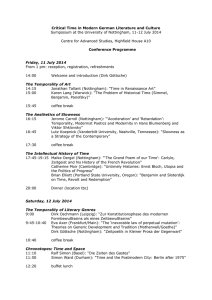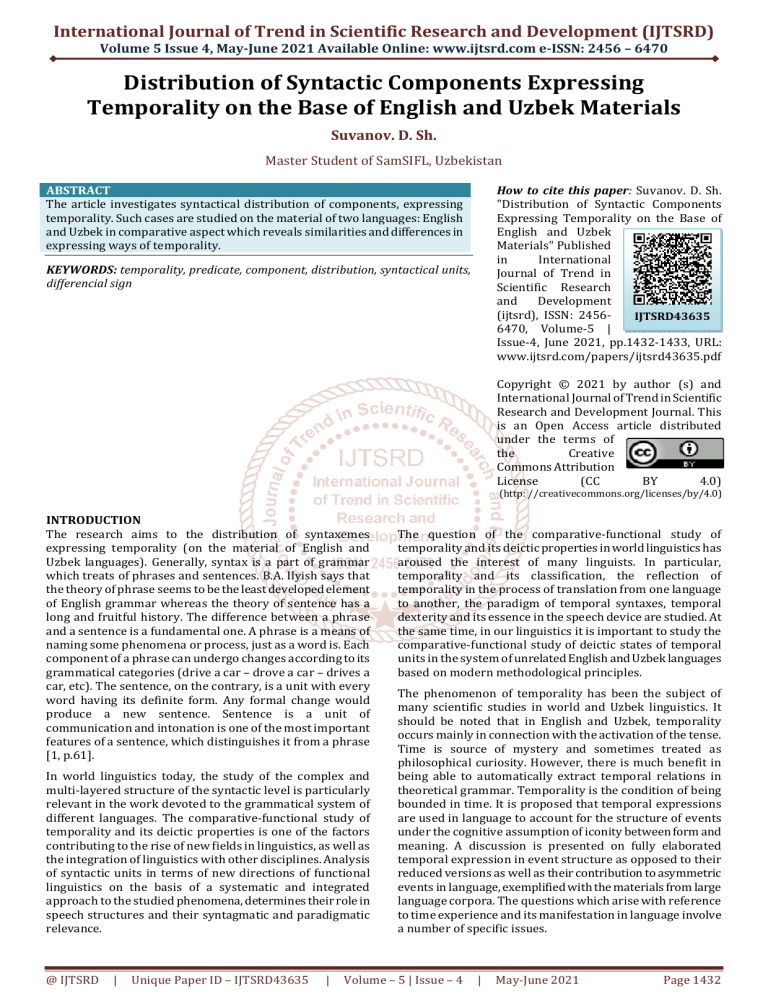
International Journal of Trend in Scientific Research and Development (IJTSRD)
Volume 5 Issue 4, May-June 2021 Available Online: www.ijtsrd.com e-ISSN: 2456 – 6470
Distribution of Syntactic Components Expressing
Temporality on the Base of English and Uzbek Materials
Suvanov. D. Sh.
Master Student of SamSIFL, Uzbekistan
How to cite this paper: Suvanov. D. Sh.
"Distribution of Syntactic Components
Expressing Temporality on the Base of
English and Uzbek
Materials" Published
in
International
Journal of Trend in
Scientific Research
and
Development
(ijtsrd), ISSN: 2456IJTSRD43635
6470, Volume-5 |
Issue-4, June 2021, pp.1432-1433, URL:
www.ijtsrd.com/papers/ijtsrd43635.pdf
ABSTRACT
The article investigates syntactical distribution of components, expressing
temporality. Such cases are studied on the material of two languages: English
and Uzbek in comparative aspect which reveals similarities and differences in
expressing ways of temporality.
KEYWORDS: temporality, predicate, component, distribution, syntactical units,
differencial sign
Copyright © 2021 by author (s) and
International Journal of Trend in Scientific
Research and Development Journal. This
is an Open Access article distributed
under the terms of
the
Creative
Commons Attribution
License
(CC
BY
4.0)
(http: //creativecommons.org/licenses/by/4.0)
INTRODUCTION
The research aims to the distribution of syntaxemes
expressing temporality (on the material of English and
Uzbek languages). Generally, syntax is a part of grammar
which treats of phrases and sentences. B.A. Ilyish says that
the theory of phrase seems to be the least developed element
of English grammar whereas the theory of sentence has a
long and fruitful history. The difference between a phrase
and a sentence is a fundamental one. A phrase is a means of
naming some phenomena or process, just as a word is. Each
component of a phrase can undergo changes according to its
grammatical categories (drive a car – drove a car – drives a
car, etc). The sentence, on the contrary, is a unit with every
word having its definite form. Any formal change would
produce a new sentence. Sentence is a unit of
communication and intonation is one of the most important
features of a sentence, which distinguishes it from a phrase
[1, p.61].
In world linguistics today, the study of the complex and
multi-layered structure of the syntactic level is particularly
relevant in the work devoted to the grammatical system of
different languages. The comparative-functional study of
temporality and its deictic properties is one of the factors
contributing to the rise of new fields in linguistics, as well as
the integration of linguistics with other disciplines. Analysis
of syntactic units in terms of new directions of functional
linguistics on the basis of a systematic and integrated
approach to the studied phenomena, determines their role in
speech structures and their syntagmatic and paradigmatic
relevance.
@ IJTSRD
|
Unique Paper ID – IJTSRD43635
|
The question of the comparative-functional study of
temporality and its deictic properties in world linguistics has
aroused the interest of many linguists. In particular,
temporality and its classification, the reflection of
temporality in the process of translation from one language
to another, the paradigm of temporal syntaxes, temporal
dexterity and its essence in the speech device are studied. At
the same time, in our linguistics it is important to study the
comparative-functional study of deictic states of temporal
units in the system of unrelated English and Uzbek languages
based on modern methodological principles.
The phenomenon of temporality has been the subject of
many scientific studies in world and Uzbek linguistics. It
should be noted that in English and Uzbek, temporality
occurs mainly in connection with the activation of the tense.
Time is source of mystery and sometimes treated as
philosophical curiosity. However, there is much benefit in
being able to automatically extract temporal relations in
theoretical grammar. Temporality is the condition of being
bounded in time. It is proposed that temporal expressions
are used in language to account for the structure of events
under the cognitive assumption of iconity between form and
meaning. A discussion is presented on fully elaborated
temporal expression in event structure as opposed to their
reduced versions as well as their contribution to asymmetric
events in language, exemplified with the materials from large
language corpora. The questions which arise with reference
to time experience and its manifestation in language involve
a number of specific issues.
Volume – 5 | Issue – 4
|
May-June 2021
Page 1432
International Journal of Trend in Scientific Research and Development (IJTSRD) @ www.ijtsrd.com eISSN: 2456-6470
The term "temporality" is widely used not only in the natural
but also in the social sciences, and is on the concept of
"time". First of all, time is a philosophical, ontological
category. In philosophy, time is a form of existence,
"representing the existence and sequence, continuity of
changes in the state of all material systems and processes in
the universe" [3, p.191]. The categories of time, space, and
motion are studied in this discipline as specific units,
although time is defined as the “basic category of the
universe,” “the most important factor in the existence of the
universe and man,” and psychological, biological, cultural,
physical, and spatial times” [2, p.7]. According to another
classification, there are only three types of time: physical,
that is, time "as an element of the objective universe";
chronological time, that is, "the time that represents the
sequence of events"; “One or another semiotic, expressed
through the formal linguistic units of the human mind
attempts to create a real-time model using systems” [2,
p.11]. In addition, there is an "absolute time" that does not
depend on the occurrence of certain processes, which are
external conditions of existence, and a relative time in which
various processes take place.
includes both grammatical and lexical means of expressing
temporal relations, and it also has a broader meaning than
the concept of time in terms of volume. In linguistics,
representatives of such disciplines as grammatical
(traditional), cognitive, communicative and functional
grammar are engaged in the study of the category of
temporality and time.
The category of time is morphological-syntactic by its
linguistic nature and does not correspond to the logicalsemantic category of temporality both in terms of content
and in terms of expression. The category of temporality
@ IJTSRD
|
Unique Paper ID – IJTSRD43635
|
References:
[1] Ilyish B. A. The Structure of Modern English. Leningrad. 1971.-378 р.
[2]
Jacobs R. A. English Syntax. A Grammar for English
Language Professionals. – Oxford University Press,
1993. – 378 p.
[3]
Pocheptsov G. G. Phatic communication // Semantics
and pragmatics of syntaxical units. – Kalinin, 1981. –
С. 52-59.
[4]
Petrash N. V. On temporal syntaxemes in the English
sentence // "Systematic semantic relations in the
language (study on Romano-Germanic linguistics) Volgograd, 1978-issue 8" article.
[5]
Zimek R. Toward a Structural Understanding of a
Sentence. Ceskolovenska rusistika, 1967, No. 2. p. 8087.
Volume – 5 | Issue – 4
|
May-June 2021
Page 1433

